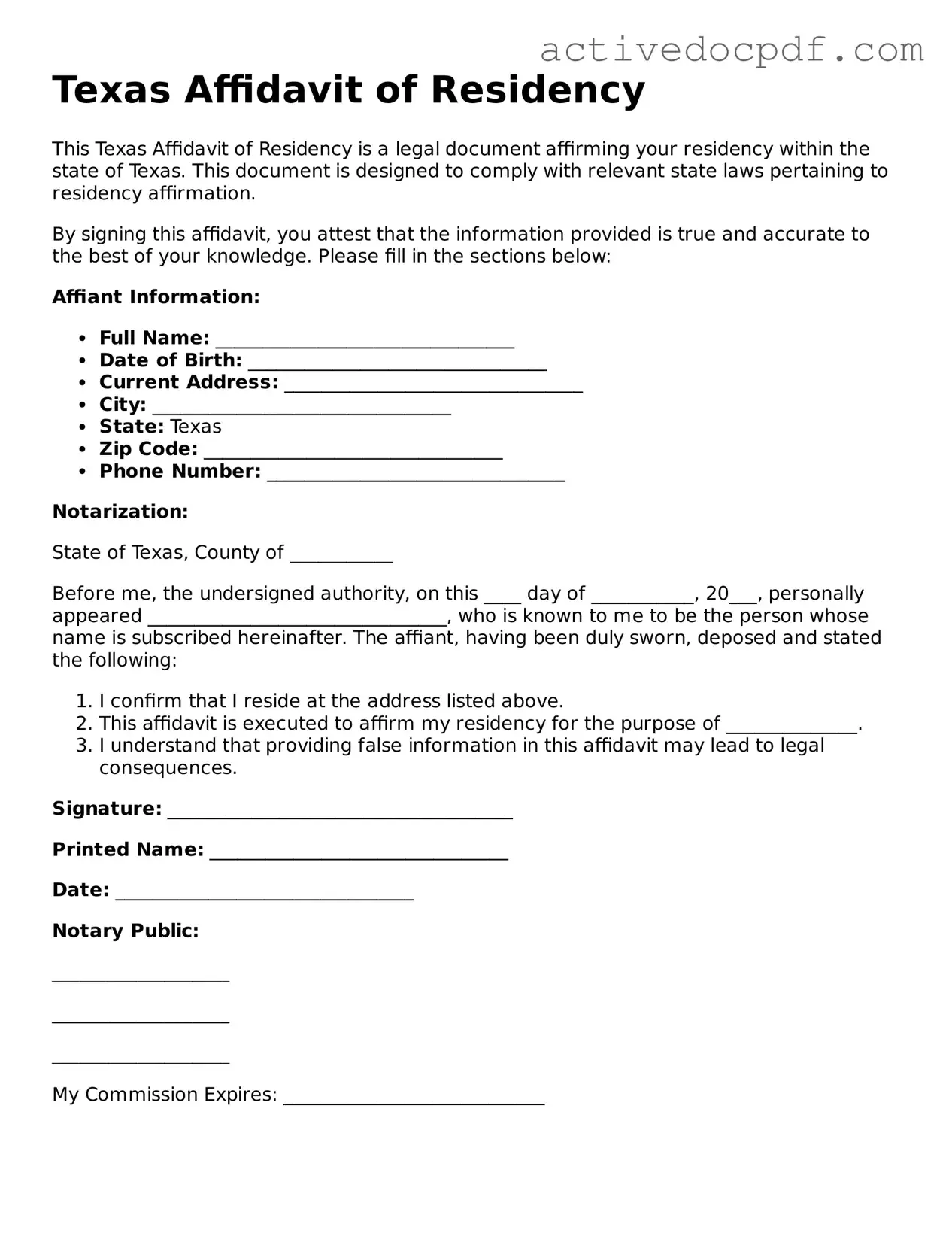The Texas Affidavit of Residency form is a legal document used to verify an individual’s residence in Texas. This form is often required for various purposes, such as enrolling a child in school, obtaining a driver's license, or applying for certain benefits. It serves as a declaration that the individual resides at a specified address in Texas.
Typically, anyone who needs to prove their residency in Texas may need to complete this form. Common situations include:
-
Parents enrolling their children in public schools.
-
Individuals applying for state identification or driver's licenses.
-
Those seeking certain public assistance programs.
In each case, the form helps confirm that the individual is a resident of Texas at the address provided.
To complete the form, follow these steps:
-
Obtain the form from a reliable source, such as a school district or government website.
-
Fill in your personal information, including your name, address, and the purpose for which you need the affidavit.
-
Have the form notarized. This means a notary public will verify your identity and witness your signature.
Ensure all information is accurate and complete before submission, as errors may delay the process.
After completing the form, you should submit it to the appropriate agency or organization that requires it. This could be a school district, the Department of Motor Vehicles, or another government entity. Check with the specific organization for their submission guidelines, as they may have particular requirements.
Generally, there is no fee to complete the Affidavit of Residency form itself. However, there may be a fee for notarization, as notaries typically charge for their services. It's advisable to inquire about any potential costs before proceeding.
If you need to change your address after submitting the Affidavit of Residency, you will likely need to complete a new form with the updated information. Contact the organization that received your original affidavit to determine their specific requirements for submitting a new form.
Yes, the Affidavit of Residency form can often be used for multiple purposes, as long as it meets the requirements of the requesting agency. However, it is important to confirm that the information provided is relevant to each specific situation. If different agencies require different forms, you may need to fill out separate affidavits tailored to each request.
